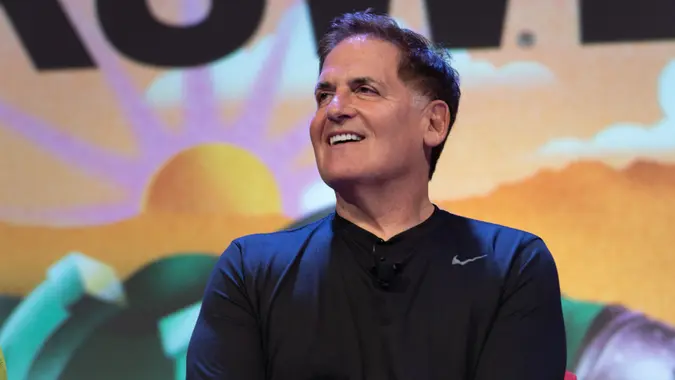I’m an Economist: Here’s When Tariff Price Hikes Will Start Hitting Your Wallet

Commitment to Our Readers
GOBankingRates' editorial team is committed to bringing you unbiased reviews and information. We use data-driven methodologies to evaluate financial products and services - our reviews and ratings are not influenced by advertisers. You can read more about our editorial guidelines and our products and services review methodology.

20 Years
Helping You Live Richer

Reviewed
by Experts

Trusted by
Millions of Readers
A blanket 10% reciprocal tariff issued by President Donald Trump took effect April 5, with more slated to roll out on Aug. 1. So far, prices haven’t surged — but that’s likely to change.
GOBankingRates spoke with Lauren Saidel-Baker, an economist at ITR Economics, about why prices have yet to spike, when they will and how far they are expected to climb.
Why Prices Haven’t Surged Yet
We never expected that prices would immediately rise by the full extent of the tariffs imposed.
In some cases, importers absorb at least a portion of the cost. In many cases, excess inventory has been brought into the U.S. in anticipation of these tariff announcements and there will be a lag while that lower-cost inventory is available.
While the impact of tariffs on pricing varies materially on a microeconomic scale, it tends to be smaller on a macroeconomic scale. The supply chain is relatively neutral currently, and stable financial conditions have permitted consumers to shift spending behaviors such that the aggregate effect of tariffs on overall consumer prices has been minimal thus far.
The overall consumer price index also includes housing and services, which are more insulated from tariffs.
When Tariffs Will Start Raising Prices
The impact will be gradual, rather than a one-time step-up in prices. Moreover, other fundamental factors — including both fiscal and monetary policy — will also drive inflation in the coming quarters, making the impact of tariffs harder to differentiate.
Trends in the inflation-adjusted U.S. M2 Money Supply indicate that the effective amount of money in circulation is rising. Recent results from the Chicago Fed’s National Financial Conditions Index also bode well for consumer and business spending, suggesting a modest loosening in financial conditions.
These developments, combined with our outlook for a gradual increase in economic activity support our expectation for rising inflationary pressures ahead. Plan for growing demand for goods and services to amplify inflationary pressures through mid-2026.
How Much More You Might Pay
We do not forecast imported goods specifically but expect the 2025 U.S. consumer price index to be 2.8% higher than the 2024 level.
More From GOBankingRates
- Nearly 1 in 3 Americans Hit by a Costly Holiday Scam, Norton Survey Shows -- How To Avoid This
- Here's What the Average Social Security Payment Will Be in Winter 2025
- How Middle-Class Earners Are Quietly Becoming Millionaires -- and How You Can, Too
- The Easiest Way to Score $250 for Things You Already Do
 Written by
Written by  Edited by
Edited by 

























